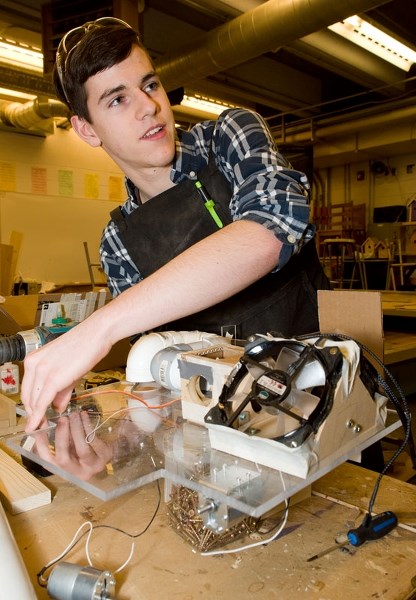St. Albert's student scientists are putting their brains to the test today in Edmonton as part of one of the region's biggest science and engineering competitions.
About 11 teams of student scientists from Paul Kane, Marie Poburan, Sir George Simpson, Robert Rundle, Ronald Harvey and Elmer S. Gish schools are at the Shaw Conference Centre today to compete in the 2016 Edmonton Science Olympics. The annual event challenges students in Grades 1 to 12 to complete a variety of scientific and engineering challenges under a tight time limit.
The event is meant to spark interest in science and engineering jobs and give the students a chance to have fun, says Jeanne Keaschuk, outreach supervisor with the Association of Professional Engineers and Geoscientists of Alberta (which runs the event).
"Some of them are going to be making Thermoses," she says, while others will have to construct catapults, hovercrafts or bridges.
Keaschuk says the roughly 500 Edmonton-region students at the event will need skill, creativity, and teamwork to overcome these challenges, all of which are based on elements of the school science curriculum. While some of the competitions involve building something in advance, most are mystery challenges done on the day of the event.
Grade 2 student Jaida Zaparyniuk is on one of the three Gish teams at the event. In addition to constructing a boat from pop bottles and a tower from paper, her team has had to construct a Thermos using recyclable materials.
"It's made out of shredded phone books and shredded cardboard," she says – there's a glass jar for the water surrounded by the phone books inside a coffee can surrounded by the cardboard.
"We thought it would keep the hot water really warm."
The current model loses just 28 C of heat after 30 minutes, says coach Melissa Zawaduk.
Robo rally
Over at Paul Kane, four-time Science Olympian Evan Gamble was working on his team's entry into the Mars Rover challenge, where competitors must build a remote-controlled robot that can navigate obstacles and collect as many coloured ping-pong balls as possible within a time limit.
It's been a struggle getting the project together, Gamble says – the apparently off-brand robot parts provided by the event staffers fried three of their computers, and the event's fluctuating rules mean their robot may be disqualified.
They've also used an exceptionally ambitious design. While most teams will likely field ramp or scoop-based robots, Team PK has made a massive four-wheeled rover that requires two pilots to operate. It's got special Mechanum wheels (which are covered with rollers set at a 45-degree angle) that let it move sideways, a vacuum to suck up balls, and a sorting chamber equipped with a digital camera and a servo door so it can eject undesirable balls.
"I think our total budget on this is going to be close to $500," Gamble says.
While they're not allowed to attack the other robots directly, there's nothing in the rules about interference, Gamble says.
"That's where this comes in," he says, indicating a blower unit. If other teams start giving them trouble, Team PK plans to use the blower to blast balls away from their robots.
Gold and glory
Competitors at this year's event will receive gold, silver or bronze awards depending on how they score, Keaschuk says.
Events like this are a lot of fun and look great on a resume or university application. Gamble says. He and many of his teammates plan to get into engineering once they leave high school.
Gamble says science is about curiosity, and that's something that should be fostered in everyone.
"Even if you don't go into sciences, curiosity and a love of learning are going to help you out."
The Science Olympics run from 9 a.m. to 2:30 p.m. this March 5. Visit apega.ca for details.




